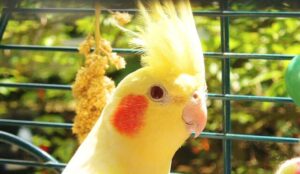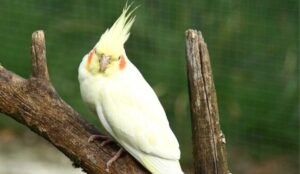Welcome to our cozy corner for bird lovers! Today, we’re diving into a topic that’s crucial for every bird parent: finding the perfect spot in your home for your feathered friend’s cage. It’s not just about picking a random corner; the right location can make a world of difference for your bird’s health and happiness. So, let’s flutter into the details!
Understanding Your Bird’s Needs
Birds aren’t just pets; they’re companions with their own unique needs and behaviors. In the wild, they enjoy the warmth of the sun, the rustle of leaves, and the chatter of other birds. When bringing a bird into your home, it’s important to recreate some of these natural elements to keep them happy. Sunlight, stable temperatures, and a bit of social interaction go a long way in making your bird feel at home.
Factors to Consider When Choosing a Location

Selecting the right spot for your bird’s cage in your home is more than just an aesthetic decision; it’s about creating a healthy and happy environment for your feathered friend. Birds are sensitive to their surroundings, and several key factors must be considered to ensure their well-being.
Natural Light and Sun Exposure
Sunlight plays a crucial role in the health of birds. It not only boosts their mood but also is vital for their physical health, aiding in Vitamin D synthesis, which is essential for bone health and metabolic processes. However, too much direct sunlight can be harmful, potentially causing overheating or even leading to stress. It’s important to find a balance.
Ideally, position the bird cage in a spot where it can receive indirect natural light for most of the day. This can be near a window with sheer curtains or blinds that diffuse the light. This way, the bird gets the benefits of natural light without the risks associated with direct sun exposure. It’s also essential to provide shade within the cage so the bird can retreat from the light when it needs to.
Temperature and Drafts
Birds are sensitive to temperature fluctuations and drafts. The ideal location for a bird cage is in a room where the temperature is consistent and comfortable, mimicking the stable environment they would find in nature. Avoid placing the cage near air conditioning vents, heaters, or drafty windows, as these can create uncomfortable and potentially harmful conditions for your bird.
A stable temperature helps maintain the bird’s regular body temperature, which is crucial for their health. Also, drafts can lead to respiratory illnesses in birds, so ensuring a draft-free environment is vital.
Noise Levels
While birds are social creatures and generally enjoy some level of ambient noise, excessive noise can be stressful and harmful. Continual loud sounds or sudden loud noises can cause anxiety and fear. Strike a balance between a quiet space and an overly noisy environment.
The best location might be a living area where there is regular but not overwhelming household activity. Avoid placing the cage in too isolated an area, as the lack of stimulation can lead to boredom or depression, but also steer clear of overly noisy spaces like near TVs or sound systems that are frequently used at high volumes.
Air Quality
The respiratory system of birds is extremely delicate, making them highly susceptible to airborne pollutants. Therefore, it’s crucial to place the bird cage in an area with good air quality. Avoid locations like kitchens, where cooking fumes (especially from non-stick cookware) can be toxic, or garages where there might be exposure to car exhaust or other chemicals.
Ensure the room is well-ventilated with clean, fresh air. Regular air exchange is essential, but make sure this doesn’t introduce drafts or pollution from outside.
Safety
Safety is paramount when choosing a location for your bird’s cage. The area should be free from potential hazards. This includes keeping the cage out of reach of other pets, particularly those that may pose a predatory threat. Also, consider the risk of young children who may unintentionally harm the bird.
The cage should be placed on a stable surface where there’s no risk of it being knocked over. Additionally, ensure that the area around the cage is free of toxic plants, exposed wires, or small objects that the bird could ingest if it gets out of the cage.
Ideal Locations in the House
Living Room
The living room is often a great choice. It’s usually lively during the day and quieter at night. Plus, your bird gets to be part of the family activities!
Home Office or Study
If you work or study from home, placing the cage in your office can be ideal. It offers a quiet environment but still allows for social interaction.
Bedrooms
Think twice before placing a bird cage in a bedroom. Birds’ sleep cycles differ from ours, and their early morning chirps might disrupt your sleep.
Choose Cage Size for Healthy Cockatiel
While discussing where to put a bird cage in the house, another critical aspect to consider is the size of the cage, especially if you own a cockatiel. A spacious and well-structured cage is vital for the health and happiness of your feathered friend. If you’re curious about the ideal dimensions and features of a cockatiel’s habitat, you’ll want to explore our detailed guide on Cage Size for Healthy Cockatiel.
In this guide, we delve into the specifics of what makes a cage suitable for your cockatiel, considering factors like flying space, perches, and toy placement to ensure your pet has a comfortable and stimulating environment.
Creating a Bird-Friendly Environment Around the Cage
Transform the area around the cage into a little bird paradise. Add some non-toxic plants, bird-safe toys, and perches. Ensure there’s enough space around the cage for easy cleaning and maintenance.
Common Mistakes to Avoid

When setting up your bird’s living space, it’s not just about doing the right things, but also about avoiding certain common pitfalls that can negatively affect your bird’s health and happiness. Let’s delve into some of these mistakes to ensure you create the best environment for your feathered friend.
Direct Sunlight or Drafts
One of the most common mistakes bird owners make is either exposing their birds to too much direct sunlight or placing their cage in drafty areas. Both scenarios can have detrimental effects on your bird’s health.
- Direct Sunlight: While birds do require sunlight, direct exposure, especially for prolonged periods, can lead to overheating and dehydration. In extreme cases, it can even cause heatstroke. Ensure the cage is placed where natural light is available but diffused, and provide shaded areas within the cage where your bird can retreat.
- Drafts: Birds are highly susceptible to drafts, which can lead to respiratory issues and other health problems. Avoid placing the cage near open windows, doors, or air vents where drafts are common. Instead, choose a location with stable air flow that’s neither too breezy nor too stagnant.
Isolation
Birds are inherently social creatures, thriving on interaction and engagement with their environment. Isolating them in seldom-used rooms or areas away from the family’s daily activities can lead to a range of issues, including depression, anxiety, and behavioral problems.
- Avoid Remote Areas: Placing your bird in a remote part of the house where they have little to no interaction with humans or other pets can be detrimental to their mental health. Birds enjoy being part of the household’s daily hustle and bustle. They appreciate the sights and sounds that come with being around their human family.
Ignoring Social Needs
Another mistake is not adequately addressing the social needs of your bird. Birds need regular interaction and stimulation to stay mentally and emotionally healthy. Neglecting these needs can lead to a host of problems, including feather plucking, aggression, and other signs of stress.
- Regular Interaction: Ensure your bird has opportunities for regular interaction. This doesn’t mean they need constant attention, but they should be in a location where they can see and hear the household’s activities and feel like a part of the family.
- Enrichment: Providing toys, mirrors, and other forms of enrichment in the cage can help keep your bird entertained and engaged, especially when you’re not around. Rotating these toys periodically can also help keep their environment stimulating.
By avoiding these common mistakes, you can significantly enhance the quality of life for your bird. Remember, the goal is to replicate, as closely as possible, the stimulating environment they would experience in the wild. This means considering their physical comfort as well as their emotional and social needs. With the right care and environment, your bird can lead a happy, healthy, and fulfilling life as a cherished member of your family.
Tailoring the Location to Your Bird’s Personality
Every bird has its personality. Some might enjoy the hustle and bustle of a busy room, while others might prefer the tranquility of a quieter space. Observe your bird’s behavior and adjust accordingly. Their comfort and happiness are your guiding stars.
Wrapping Up
Finding the perfect spot and choosing the best cage for Cockatiel is a mix of understanding your bird’s needs and working with the space you have. It’s about creating a safe, comfortable, and engaging environment for your feathered friend. Remember, a happy bird is a healthy bird!
Looking for more tips on bird care? Check out our other resources for all things feathery and fun. Until next time, keep your wings spread and your spirits high!

Hi, I’m Regina Rios. Just another bird lover who loves to share knowledge from personal experience. I’ve grown up with pet birds since childhood as my mommy also loves birds. As I can’t pet many birds in open air in my house as my mom does; I created my first bird cage on my rooftop using wood, copper wire, and a metal shed in 2018 and start collecting pet birds. Now, I have so many pet birds such as Macaws, Parrot, Cockatiel, Parakeet, and others. Not only that, if I see natural birds are injured I keep them in my house until they get well. Now, my hobby becomes my income source as my home birds have babies and I sell them to birds lover like mine. I’ve created this blog to inspire others bird owners by sharing my personal knowledge. Good Luck!

